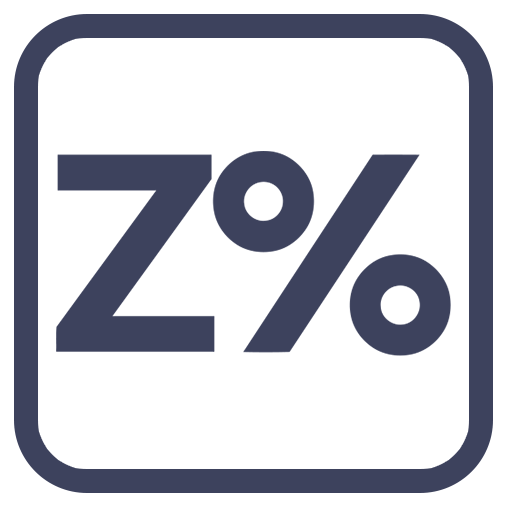-

- 3.75Interest Rate
- 0.3Inflation Rate MoM
- 3.2Inflation Expectations
- 0.2Retail Sales MoM
- 3.8GDP Growth Rate
- GDP m/m
- 52.2Manufacturing PMI
- 54.1Services PMI
- 4.4Unemployment Rate
Day Trading
Short Term/Scalp Opportunity
![]()
Waiting for confirmations
Swing Trading
Long Term Opportunity
Waiting for confirmations
Bitcoin, the first and most well-known cryptocurrency, has become an asset class in its own right. Originally created as a decentralized alternative to traditional currencies, Bitcoin has grown into a store of value and speculative investment, with a particularly strong following among those looking for alternatives to fiat currencies. Its price is driven by a mix of factors, including adoption rates, regulatory news, and sentiment toward cryptocurrencies in general. Bitcoin’s correlation with traditional assets like equities is mixed, but it often shows an inverse correlation with gold, as both assets are viewed as alternatives to government-controlled currencies. Key drivers for Bitcoin’s price include market demand, investor sentiment, and the decisions of major companies or governments regarding crypto regulations. Additionally, factors like network security, mining activity, and technological upgrades can influence Bitcoin’s value.
The US Dollar (USD) is the most widely traded currency in the world and the primary reserve currency. It is the official currency of the United States and is often seen as the global standard for trade and investment. The USD’s price is influenced by the monetary policy of the Federal Reserve, inflation levels, and interest rates. Its dominance in global trade makes it highly correlated with other major currencies, especially the Euro and Japanese Yen. Key impact parameters for the USD include US economic growth (GDP), job market conditions, consumer spending, and the Fed’s policy decisions. As a safe-haven currency, the USD often rises during periods of global risk aversion. Its price is also sensitive to geopolitical events, such as US government policy changes and international conflicts.
 BTCUSD Analysis
BTCUSD Analysis
Introduction
BTC/USD (Bitcoin/US Dollar) Introduction BTC/USD represents the exchange rate between Bitcoin (BTC), the first and most well-known cryptocurrency, and the US Dollar (USD). As a decentralized digital asset, Bitcoin operates independently of traditional financial systems and is often seen as a store of value or a speculative asset. Its price tends to experience significant volatility, driven by a range of factors from technology developments to broader economic conditions. Important Points Bitcoin was created in 2009 by an anonymous entity known as Satoshi Nakamoto and is based on blockchain technology, offering decentralized and secure transactions. BTC/USD is the most traded cryptocurrency pair, and its price can fluctuate significantly due to market sentiment, adoption rates, and regulatory news. Bitcoin is considered a store of value, often likened to "digital gold," and its scarcity (capped at 21 million coins) plays a role in its price movements. Correlations Bitcoin is often correlated with investor risk appetite and broader market conditions. It tends to rise in value when there is higher risk-on sentiment, meaning investors are more willing to speculate on volatile assets. BTC/USD has an inverse relationship with the US Dollar, as Bitcoin often strengthens when the dollar weakens. Additionally, Bitcoin shows correlations with other cryptocurrencies, particularly Ethereum (ETH), with the broader crypto market following similar trends. Impact Parameters Key factors influencing the price of BTC/USD include: Market Sentiment: Bitcoin’s price is highly sensitive to investor sentiment, which can be influenced by market news, media coverage, and social media discussions. Regulatory News: The introduction of regulations or government policies that impact the use or legality of cryptocurrencies can cause significant price swings. Adoption Rates: Increased adoption of Bitcoin by institutions, such as companies adding Bitcoin to their balance sheets, or countries legalizing Bitcoin as a payment method, can drive demand. Technological Developments: Upgrades or changes in Bitcoin's protocol, scalability improvements, or advancements in related blockchain technology can influence Bitcoin’s price. Macro-Economic Conditions: Economic factors such as inflation rates, currency devaluation, and geopolitical instability can lead to increased demand for Bitcoin as a store of value or hedge. Price Drivers Supply and Demand: The fixed supply of Bitcoin (21 million BTC) is a major driver of its price. As the supply remains constant while demand grows, the price tends to rise over time. Halving Events: Every four years, Bitcoin undergoes a "halving," where the rewards for mining new Bitcoin are cut in half. This event reduces the rate at which new Bitcoin enters circulation, which can create scarcity and drive prices higher. Institutional Investment: Increased institutional involvement, such as major financial firms and hedge funds buying Bitcoin, can cause significant upward price movements. Public Perception and Media Influence: Bitcoin’s price is highly susceptible to public perception, especially in terms of media coverage and sentiment on social platforms like Twitter and Reddit. Global Economic Factors: As a digital currency, Bitcoin can serve as an alternative to traditional financial systems, making it more appealing during times of economic instability, currency devaluation, or inflation.
Fundamentals and Interest Rates
The policy is with the current Interest rate 0%. Latest change was 0%.
On that side the Federal Reserve policy is Dovish and (FED) has set its interest rate to 3.75% by latest change, Dec 10, 2025 (-25bp).
(FED) Higher interest rates generally lead to higher returns on investments denominated in USD. This tends to attract foreign capital into USD assets.
Based on the economic and macro fundamental data, The Fundamental Bias of BTC is Weak Bullish and for the USD is -- Neutral.
Ziwox considering Weak Bullish bias for this asset and we anticipate long-term price increases. and Fundamental Score for USD is -11. So, base on the Fundamental Score, we predict mid-term downside price movement.
Market Overview & Performance
In the current trading session, "Sydney & Tokyo", Market risk sentiment is Classic Risk-OFF. The Gold and Switzerland Frank recorded the strongest performance, while the New Zealand Dollar and Australian dollar are weakest so far.
Currencies performance vs US dollar "USD"
Gold "XAU", recorded a 0.27% increase against us dollar.
Euro "EUR", performance has been -0.01% down so far
Pond "GBP", performance has been -0.09% down as of now
Australian dollar "AUD", has dropped by -0.22%
New Zealand dollar "NZD", has dropped by -0.31%
Japanese YEN "JPY", experienced 0.01% rise
Swiss franc "CHF", experienced 0.03% rise so far
Canadian dollar "CAD", has lost -0.04%
Market risk sentiment is OFF, Investors seek safety, favoring safe-haven currencies and assets while selling off riskier investments.
Market Sentiment and Positioning
BTC COT (Commitments of Traders):
Institutions Net Position on >BitCoin is -83 included 21200 long, 21283 short and 229 position changed from last week.
So they mainly have a bearish view on this asset and sold BTC for lower prices in long-term.
Last week 229 repositioning Indicates closed positions and short-term profit-taking.
USD COT (Commitments of Traders):
Institutions Net Position on >U.S. Dollar Index is -16347 included 18448 long, 34795 short and -239 position changed from last week.
So they mainly have a bearish view on this asset and sold USD for lower prices in long-term.
Last week -239 repositioning Indicates more sell positions and price pressure in short-term.
Retail Traders:
Crowd traders or Retail traders are bullish on the BTCUSD with 87% 13% ratio. 2822 long pos and 611 short position.
We generally adopt a contrarian approach towards crowd sentiment and we give probability BTCUSD prices may decrease.
Technical Levels and Support/Resistance
The BTCUSD pair is approaching a critical technical support level near 83602.20.
Technical trend is Sell, So If the pair continues to weaken, this support could become a significant area to watch for potential reversal or consolidation.
On the upside, there is key resistance near 91397.19. Technically, If the pair continues to the upside, this resistance level could become a significant area to watch for sell entery potential.
Unlock all Ziwox Terminal features with affordable subscription
Our forecasts, signals, and trade opportunities are provided to help you stay informed, but we do not take responsibility for any potential losses.
Additionally, we do not offer financial or investment advice in this section of the website.
Before engaging in foreign currency trading, its important to carefully consider your own investment goals, experience level, and risk tolerance.
We want to emphasize that we cannot be held liable for any loss or damage, including potential profit loss, that may result from using or relying on this information. Your decisions are ultimately your own, and we encourage you to approach trading with caution and awareness.










